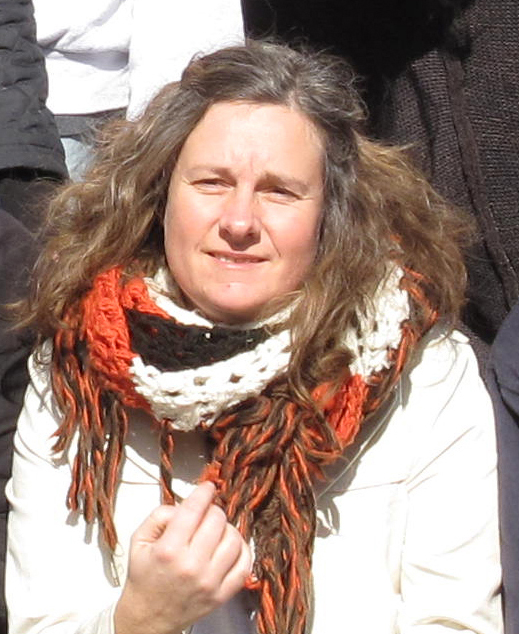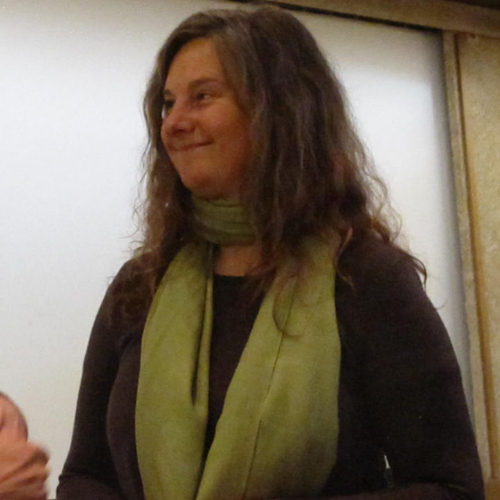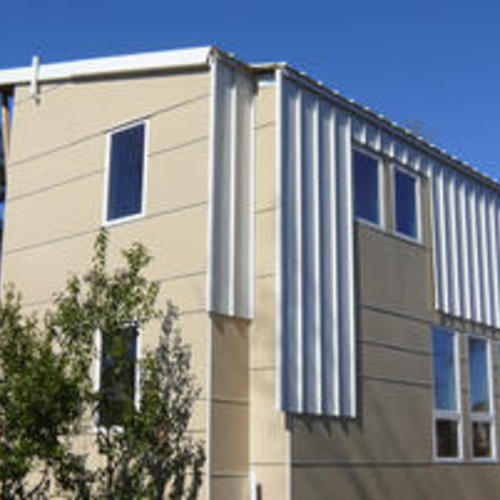
Image Credit: Martin Holladay
Katrin Klingenberg, the founder of the Passive House Institute U.S. (PHIUS), caused a minor earthquake earlier this year when she suggested that the existing Passivhaus standard didn’t make sense in North America. On January 31, 2012, Klingenberg wrote, “We came to the conclusion that it’s time to allow for a modification process to the rigid annual heating and cooling requirement of less or equal to 15 kWh/m2yr … for the North American continent’s more extreme climates, and define what has been missing all together so far – a stringent requirement for the third load which is the significant energy consumed in North America for dehumidification. This idea that we need to adapt the standard to various regions has taken root around the world from domestic energy experts like Martin Holladay, Alex Wilson, and Marc Rosenbaum and to Passive House groups from other countries, like the Swedes.”
As GBA reported earlier this year, many U.S. Passivhaus consultants were unsettled by Klingenberg’s proposal. Their main concern: builders and home buyers would be confused by the existence of two different superinsulation standards that shared the same name. Because of this concern, Hayden Robinson, an architect and certified Passivhaus consultant based in Seattle, launched a petition urging Klingenberg to choose a name other than “Passivhaus standard” or “passive house standard” for her proposed new North American standard.
Klingenberg visits the Building Science Corporation
Joseph Lstiburek and Betsy Pettit, who host the annual Westford Symposium on Building Science in Westford, Massachusetts, invited Klingenberg to speak at this year’s conference. In her July 31 presentation, “Climate-Specific Passive Building Standards for the U.S.,” Klingenberg suggested several reasons why the European Passivhaus standard might need to be tweaked for use in North America.
She began by acknowledging a critic of some aspects of the…
Weekly Newsletter
Get building science and energy efficiency advice, plus special offers, in your inbox.

This article is only available to GBA Prime Members
Sign up for a free trial and get instant access to this article as well as GBA’s complete library of premium articles and construction details.
Start Free TrialAlready a member? Log in















26 Comments
Source Energy and Peak Loads
I think there is a lot of room for improvement in the South----
because we consume a high share of Source Energy.
I agree... We (southerners especially) should optimize our enclosure designs to limit Peak Loads.
When time of day metering spreads....this will be more obvious.
As a platform, this is
As a platform, this is interesting. Okay, more than that. Can't help but wonder who the experts will be who work it all out.
One comment: yes, a lot of cheap energy is going to come online and of course the folk who have money tied up in coal aren't going to shut their pie holes either ... that's why I'm leaving ROI out of my personal calculations for upgrading the house we're buying. Instead, I'm focusing on quality of life, durability, sustainability, and ease of maintenance.
?
I'm not sure I completely understand Dr. Joe's "last word"...
Is he just saying that "abundant", "cheap" energy makes selling conservation difficult?
What about this:
What is he saying here?
Changing how - in what direction?
Is Dr. Joe predicting a long term trend of energy abundance?
Response to Lucas Durand
Lucas,
I won't try to speak for Joe Lstiburek -- but if you follow the news very much, you've probably noticed that many energy experts are predicting that energy supplies will increase markedly over the next few years, with several new natural gas and oil discoveries coming online. This appears to be a worldwide trend.
A few articles -- almost at random:
We face a worldwide glut of oil
Natural gas glut a dilemma for Obama
Let's not make incautious assumptions about the future...
Martin,
Thanks for the reply - I didn't think Dr. Joe would be available to comment on his own behalf...
I am aware of the hype but I encourage readers to think critically about what they read and slow down before jumping to a conclusion.
For example a recent, much ballyhooed study by Leonardo Maugeri has been used as support for this view of future energy abundance.
Not receiving nearly as much press is the quantity of ink that has been used to poke holes in Maugeri's premises - including this doozy where he admits to a fundamental arithmetic error that significantly affects his projections.
Let's not confuse reserves with supply - there is a lot that happens in between before one becomes the other.
http://oilandglory.foreignpolicy.com/posts/2012/07/27/the_weekly_wrap_july_27_2012_part_i
http://www.nytimes.com/2011/06/26/us/26gas.html?pagewanted=all
http://money.cnn.com/2012/07/31/news/economy/drought-oil-us/
Response to Lucas Durand
Lucas,
I can assure you that I am not jumping to conclusions. I just provided a few links in response to your apparent puzzlement over what Joe was talking about.
Here's all I know about energy predictions: every time I've made one, I've been wrong. These days, I try to avoid predictions.
For me, the main reason to work at lowering fossil fuel consumption is to address the challenge of global climate change. This imperative is independent of any discussion of energy supplies or energy prices.
Response to Martin
Martin,
I didn't mean to imply you were jumping to conclusions and as I said, I appreciate your earlier reply.
In general, as you pointed out, there has been an apparent tendancy in the media to promote a certain point of view when, as I'm sure you are aware, there is usualy more to consider.
In case Dr. Joe's comments were made from that point of view (and it still isn't clear to me whether they were), I thought it might be a helpful reminder that he may not be correct.
The time to start taxing
The time to start taxing carbon is when it is abundant and inexpensive. We are lucky that fracking is making that time happen now delaying cheap cleaner peak carbon energy. We must take this century to use carbon to build the after carbon world such as new nuclear designs and add much more long life energy infrastructure.
Interpretation
Regarding Joe Lstiburek’s closing comments:
I assume that he means that falling fuel prices are going to reduce the incentive to invest in energy efficiency.
That is, unless the government can turn energy efficiency into a “political program,” which I assume means offering publicly funded incentives for energy efficiency, and/or taxing fuels to encourage conservation.
We are all losing our shirts
Re Joe's comments and Martin and Lucas' discussion.
The thing about the hype around North America's energy future, as Lucas is quite aware of, is that it is dependent on hard and expensive to extract unconventional resources. But these shale gas and shale oil plays have distressingly fast depletion rates.
Combining the high extraction costs and fast depletion rates, the price for gas has to be a whole lot higher than it is now. Which is why Rex Tillerson the CEO of ExxonMobil recently said this with respect to natural gas production...
Art Berman provided this dose of reality last year...
There are already suggestions that prices will jump...
Natural Gas Is Heading Higher: More Data
But as Martin points out, we shouldn't be thinking about the cost or availability of natural gas, because climate change is a far greater issue.
I'll let Fatih Birol of the International Energy Agency put things clearly.
Building to less than Passive House, or building more than is needed at this point seems pretty foolish.
Andrew
Andrew sums it up nicely
There is always an opposing force, superinsulation means less trips for the fuel oil or propane dealer. The electric providers have grudgingly promoted conservation but likely only for peak reduction or pollution credits.
We are now in the era of dirty energy, tar sands, shale gas, deep water platforms. Why do the energy companies sell for below the cost of production? This will not be the case for very long, a monopoly it will be until the last barrel is burned.
Our disposable society places no value on the future, this is why energy efficiency is lagging. Live for today, let the next generation fend for themselves. I choose conservation and will do so until I make my exit, we will all be the same when the oil runs out.
The real issue...
I’m certainly not an expert on the Passivhaus Standard, but Ms. Klingenberg wants to have her cake and eat it too. By not agreeing to follow the original standard, she should start her own program, otherwise she is infringing on the rights and ownership of the original program. Starting her own program would allow her to set any criteria she wants, but the way I see it, she wants to ride the wave of an established standard just on her own terms; it’s easier to steal a well known name than to go thru the pain and cost of starting a new program. BTW, her answer to Joe’s comments, “I’m stubborn”, demonstrates how pathetic her argument is; and in case she hasn’t notice, the Passivhaus Standard is a boutique program in the US.
Just think what would happen if the USGBC, NAHB or Energy Star programs would see you take their guidelines, change them to “your own” set of guidelines, but still use their name. I’m sure you’ll have a line of Attorneys on your front door the next day.
Response to Armando Cobo
Armando,
While you may be correct that Katrin Klingenberg and PHIUS are crossing an ethical line, I don't think they are crossing a legal line -- which is why I doubt that she will have "a line of attorneys" at her door any time soon.
As GBA has previously reported, the Passivhaus Institut (PHI) in Darmstadt (Wolfgang Feist's group) has announced that "The PHI has always encouraged an open market, having never trademarked ‘Passive House’ nor granted regional monopolies or territories." This announcement appears to give PHIUS the right to use the terms "Passivhaus" and "passive house" in any manner they please.
In another GBA news article, we reported a statement made on the issue by Katrin Klingenberg. She wrote, “The term passive house was coined in the U.S. and Canada in the ’70s. It has been used in the building science discourse ever since. It is solidly in the public domain and describes a building science principle free for everyone to use.”
Ironically, Klingenberg has not hesitated to threaten legal action against those who use the term "certified passive house consultant," a phrase that she claims is owned by PHIUS. For more information on her efforts in that arena, see PHIUS Tries to Trademark ‘Certified Passive House Consultant’.
no frackin way
Conservation and frugality of resources are aspects of survival. But, applied only when necessary, unfortunately. This country's ability to grab the majority of fossil fuels discourages a frugal mindset amongst its citizens. The masses need to be educated about the virtues and importance of conservation. Its a long, rocky road.
Oh, the legal loophole card...
Interesting that is fine for PHIUS to take their established program name but copyrights and protects its own Certified Passive House Consultant, CPHC.
I relate to the same issue, as other Artists, Designers and Architects do, because there are plenty of folks and builders that steal floor plans, change a wall or two, and them call them “their” designs. I know it’s a hard concept to understand for people who do not create things.
interesting
Hmm...as the article quotes and many have commented before, it might be sensible to rate houses on (energy use)/(occupancy rating) rather than /(conditioned area). I wonder if this might also make it far easier to heat/cool/dehumidify since one is then working with more air flow per square foot. As a thought experiment, imagine a coffin with 10 to 15 Cf of conditioned air per minute: really great air flow will make it a nice living space! Well, except for certain obvious...issues. Still, intuitively, something in between coffin and 2000SF/person might work fairly well.
Response to Dustin Harris
Dustin,
Henry David Thoreau had a similar idea. In Walden, Thoreau wrote: “Formerly, when how to get my living honestly, with freedom left for my proper pursuits, was a question which vexed me even more than it does now, for unfortunately I am become somewhat callous, I used to see a large box by the railroad, six feet long by three wide, in which the laborers locked up their tools at night; and it suggested to me that every man who was hard pushed might get one for a dollar, and, having bored a few auger holes in it to admit the air at least, get into it when it rained and at night, hook down the lid, and so have freedom in his love, and in his soul be free.”
response to Martin Holladay
Yep, and I concur with him. On the other hand I have seen how many comments reject the concept of REALLY tiny houses (like the Tumbleweed houses on wheels), so was simply bringing up the possibility that there might be some acceptably large space that meets PH standards that is also small enough to function well in USA climates with standard PH ventilation.
An attempt at the worst of pros
Whether tis or tis not noble, the pursuit of color, space or time, indeed Martin, indeed.
But perhaps our pros does sicken some, green faced, they head for the can?
A just deed done amongst the finest of men with LEED they plead....
to go or to not go... green,
In the end it is still the same it is,
Size it seems, still matters where matters matter.
I blame my perfunctory and mere childish behavior squarely and
with great aplomb, on the hollowed one said to be called
the divine and most energetic one, Martin.
Lstiburek's closing comment
I read all the stuff I can from this site and buildingscience.com and have learned enough to know not to challenge Mr Lstiburek on any of his technical building science knowledge, but those last quotes of his make me wonder about his prowess as an energy analyst.
"We have an incredible amount of natural gas coming online at a very low cost...We have cheap gas, low energy costs, and plentiful energy supplies""
True today, but will that be true tomorrow? Is he aware of the uncertainty in the reserve estimates? Last January the Department of Energy cut its estimate of recoverable gas in the Marcellus Shale by 66% (1). The article states that the Marcellus shale estimate drops the amount of recoverable gas from enough to supply the US from 16 years to 7 years, based on 2010 consumption data.
There are also other things to consider; for example threats to water supplies, seismic events, and fugitive methane releases (2). The global warming potential of methane over 100 years is 21 times that for CO2 (3).
If energy prices are your motivating factor, it would be better to recognize that, whether they go up or down, they are terribly unstable. I think it's a temporary supply bubble. How temporary, who knows. If a Macondo or Fukushima scale incident occurs in the fracking industry, I wouldn't count on "cheap gas, low energy costs,..." The former head of the Atomic Energy Commission, Lewis Strauss, famously commented on low energy costs in 1954, claiming that by turning to atomic energy, one day energy costs would be "too cheap to meter."
I don't think the price of energy should rank very high on the list of motivating factors for being involved in passive house, pretty good house, LEED, or whatever label you put on it. Higher ranking factors should be things like sustainability, energy poverty, and climate change. That leads me to wonder what draws people to this site and green building in general. For some it seems to be merely an opportunity to compete in an engineering challenge -- like the DOE's Solar Decathlon. A bit shallow, I think.
1. http://www.bloomberg.com/news/2012-01-23/u-s-reduces-marcellus-shale-gas-reserve-estimate-by-66-on-revised-data.html
2. http://www.scientificamerican.com/article.cfm?id=fracking-would-emit-methane
3. http://unfccc.int/ghg_data/items/3825.php
Response to David Martin
David,
I think Joe loves playing his role as a Porsche-driving Republican surrounded by a swarm of irritating greenies. Occasionally, perhaps, he has so much fun playing the role that he just can't stop himself.
Sometimes you have to question Joe's proclamations
I am in danger of losing my license despite statements he made that there are no speed limits on highway on-ramps. After being clocked at 95 MPH on an on-ramp joining a 45 mph zone and a 60 mph zone i was informed that the on-ramp is the same speed limit as the highway it joins.
What I get for believing everything that guy says!
Response to Michael Chandler
Michael,
So that's where Joe takes his Porsche when he wants to have fun? The local on ramp?
Anyway, I can imagine Joe with his foot to the floor. But Michael -- I thought you had more sense than that. Ninety five?
Corners and Porsches.... :)
Corners and Porsches.... :)
Up on the roof....
Taking a cue from indigenous architecture in hot / humid climates...
The solution for when conditions become miserable - and especially when there is no power for A/C - is to copy the example of the jungle hut - just a roof and maybe bug mesh - and little else. The obvious question is : how does one build a superinsulated jungle hut?
Answer : you don't. You place the "jungle hut" on top of the superinsulated house.
Make sure your design has a nice, flat deck on top. That's where one can set up a belvedere, loggia, sleeping porch or whatever you wish to call it. Your roofing is a separate (and uninsulated) structure over the deck - providing shade and protection from rain. (Or the roof deck could be shaded by a pergola / trellis system, with bug mesh suspended underneath. A "Green hat".)
There are minimal walls - perhaps only a railing - and support for insect screening - and little else. If you built your roof deck from a nice durable material like fiber reinforced concrete, you will have an excellent weather proof place to while away the hot times. IMHO, a shaded roof deck is far superior to a backyard deck or a front porch. It's higher up, in the breeze, has a great view, and if one wishes to set up a hammock and sleep, it's not visible from the street below. Savvy owners / builders might also run plumbing to a "summer kitchen" and now you can have cooking AND dining al fresco. Add a lavatory for convenience, and perhaps a hot tub, for tubbing under the canopy (or stars if you wish). Make it a complete living area - run a connection for your TV / entertainment system - and you can kick back and enjoy the night time coolth and hum "Up on the roof" under your breath. Oh, and if Mother Nature hasn't turned on the breeze, install a few ceiling fans to do the job.
defining a standard for the U.S.
Tough topic, and I'm happy the discussions are happening on many fronts. While I am intrigued by Marc Rosenbaum's suggestion of a standard based upon per capita, I think the concept presents many obstacles: if I build a house for myself, spouse, and child to one standard, what happens when we adopt 2 more? Or when each child leaves home? Or when my aging parent moves in? While I can understand the concept of allowable purchased energy per capita within a household, that can be tough to enforce, and very tough to design for, standard or not. At a panel discussion I attended on the subject (the panelists were Marc Rosenbaum, Katrin Klingenberg, John Straube, and a German architect), John Straube rightly emphasized that the most predictable (via modeling) energy decisions in home construction will be about the building form and envelope assemblies. I would like to see a standard that doesn't penalize small buildings; perhaps the energy standard could be source energy "per bedroom?" This way the small, efficient 3 bedroom home rates higher than the Passive McMansion?
Log in or become a member to post a comment.
Sign up Log in